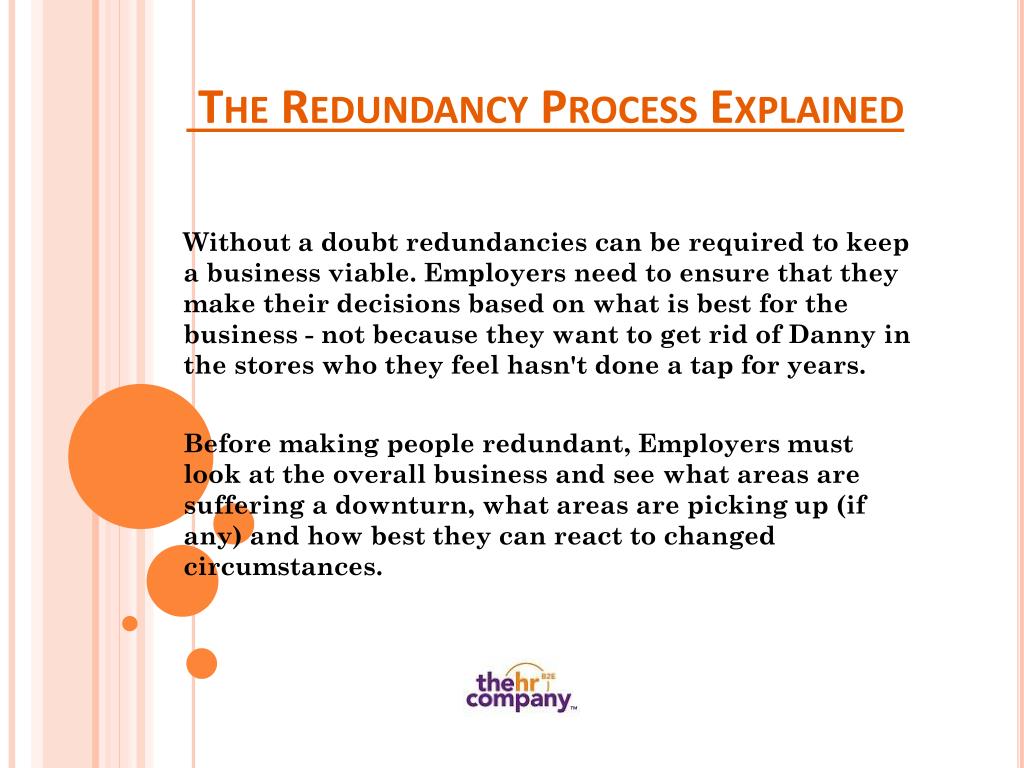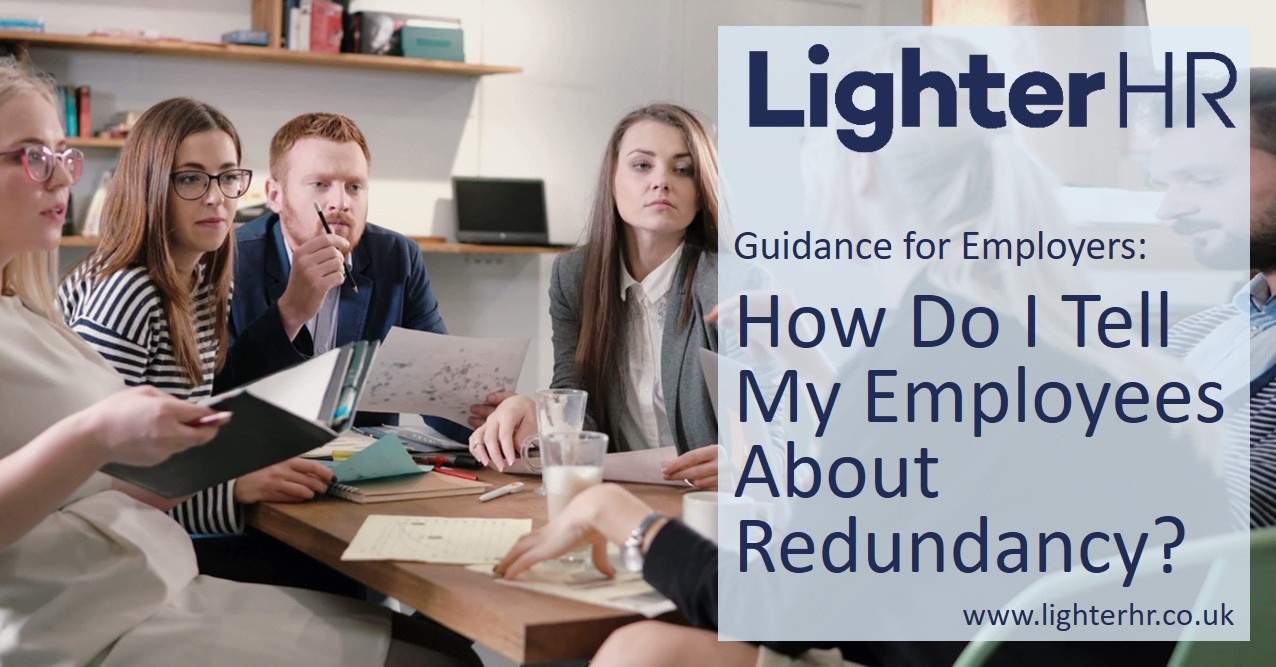Your Rights to Redundancy If Company Goes Bust: UK Employee Protections
Your Rights to Redundancy If Company Goes Bust: UK Employee Protections
Blog Article
Investigating the Interplay In Between Firm Redundancy and Organizational Adaptability for Future Development
In the dynamic landscape of today's business globe, the intricate partnership between company redundancy and organizational adaptability arises as a critical aspect for sustained development and success. Companies commonly deal with the difficulty of striking a fragile equilibrium in between preserving a level of redundancy to reduce threats and fostering flexibility to respond promptly to the ever-evolving market needs.
Importance of Business Redundancy
Firm redundancy is a critical aspect that improves organizational resilience and reduces functional threats. By incorporating redundancy measures within the organizational structure, firms can much better stand up to unexpected disturbances and fluctuations in the business setting. Redundancy works as a tactical buffer, permitting companies to adjust and respond properly to unanticipated obstacles without jeopardizing crucial procedures.
One secret element of the significance of business redundancy is its function in guaranteeing continuity throughout times of situation. When encountered with unexpected changes or emergencies, redundant systems, resources, or employees can tip in to keep critical features and prevent widespread disturbances. This continuity not just safeguards the company's reputation and consumer depend on yet also reduces economic losses and operational downtime.

Approaches for Business Flexibility

Another crucial approach is purchasing innovation and facilities that can support adaptability and scalability. Carrying out digital tools, automation, and data analytics can improve operations, boost performance, and provide useful understandings for informed decision-making. In addition, creating adaptable organizational structures that enable quick modifications to market dynamics and client needs is vital for remaining competitive in a rapidly progressing environment. By proactively identifying potential interruptions and possibilities, organizations can proactively adapt and grow in an ever-changing company landscape.
Balancing Redundancy and Adaptability
Attaining an unified equilibrium in between operational redundancy and organizational flexibility is critical in navigating the intricacies of a vibrant service environment. Striking the appropriate balance in between redundancy and flexibility is a fragile process that calls for a deep understanding of the organization's objectives, industry dynamics, and risk resistance.
To attain this balance, firms need to carry out routine assessments of their procedures to determine locations where redundancy is essential for risk reduction and my blog where adaptability can drive technology and growth. Executing adaptable frameworks, fostering a culture of constant learning and improvement, and encouraging open interaction throughout all levels of the organization are key strategies to harmonize redundancy and adaptability efficiently. By lining up these 2 important elements, companies can place themselves for lasting development and success in an ever-changing company landscape.
Situation Research Studies on Adaptation Success
In checking out instances of effective business adjustment, it ends up being obvious that the interaction in between functional redundancy and versatility is a defining factor in shaping durable services. A DVD rental solution, Netflix showed amazing adaptability by transitioning into a streaming system when digitalization interrupted the market. These case studies underscore the value of operational redundancy coupled with business flexibility in promoting long-term development and competition.
Building Durability for Future Growth
Structure resilience for future development needs a tactical alignment of operational processes with market dynamics and arising fads. Firms should adapt to changing atmospheres by cultivating a culture of versatility, development, and continual improvement. Strength entails not only recuperating from troubles see page yet likewise proactively planning for future obstacles. One vital aspect of structure resilience is spending in durable risk monitoring approaches to mitigate possible interruptions. This consists of scenario planning, branching out supply chains, and creating contingency plans for different contingencies (who pays redundancy money).
Additionally, cultivating solid connections with stakeholders, such as consumers, staff members, providers, and the community, is essential for weathering uncertainties and keeping count on and assistance during turbulent times. Efficient interaction and openness play an important function in structure durability, as they aid facilitate and align expectations collaboration in navigating uncertainties.
Moreover, companies need to prioritize understanding and advancement campaigns to upskill staff members and outfit them with the needed tools to adapt to transforming conditions. By investing in their labor force, companies can improve their adaptability and agility, eventually strengthening their durability for sustainable future growth.
Verdict

In the vibrant landscape of today's organization globe, the complex partnership between firm redundancy and organizational adaptability emerges as a crucial element for continual development and success. Firms commonly deal with the obstacle of striking a fragile balance between maintaining a degree of redundancy to alleviate risks and fostering versatility to respond quickly to the ever-evolving market needs.To attain this balance, companies require to carry out routine evaluations of their procedures to determine locations where redundancy is necessary for risk mitigation and where versatility can drive advancement and growth.In verdict, the interaction between firm redundancy and organizational adaptability is critical for future growth. Structure durability via a combination of redundancy and versatility will certainly ensure that business are prepared for the difficulties of the future.
Report this page